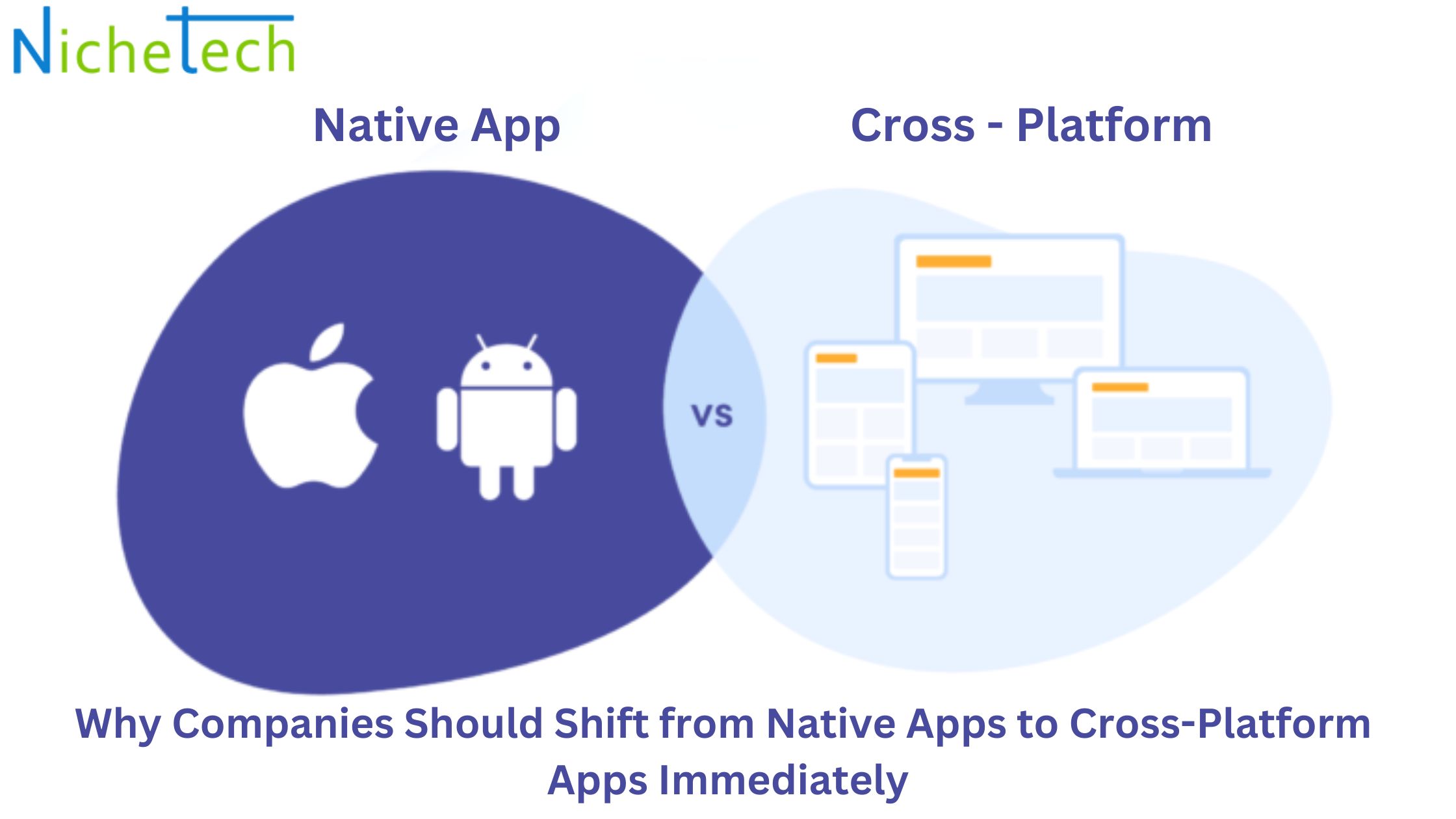In today’s fast-paced digital environment, businesses must constantly innovate and adapt to meet ever-evolving customer demands. Mobile applications have become essential for customer engagement, but building and maintaining native apps for different platforms is no longer the most effective strategy. Many companies are now transitioning to cross-platform app development to achieve greater efficiency, reach a wider audience, and reduce costs. Here’s why shifting from native apps to cross-platform apps is a crucial step that businesses should take immediately.
1. Cost Efficiency
Developing separate native apps for Android and iOS is time-consuming and expensive. With each platform requiring a unique codebase, companies essentially pay for two development teams, increasing overhead costs. Cross-platform development allows businesses to create a single app that works across multiple platforms using a unified codebase, reducing development time and costs significantly.
Why it matters: A cross-platform app can save companies up to 30-40% in development costs as it eliminates the need for two separate development projects. This allows businesses to reallocate budget towards innovation, marketing, or improving app features.
2. Faster Time-to-Market
In a competitive market, speed is everything. Native app development typically involves more extended timelines because of platform-specific design, coding, and testing. Cross-platform apps, however, enable companies to use a single codebase, which accelerates the entire development process.
Why it matters: Cross-platform development can reduce app development timelines by 50%. This means businesses can launch apps faster, allowing them to respond quickly to market changes, customer needs, and new opportunities.
3. Wider Audience Reach
One of the biggest challenges for companies developing native apps is reaching both iOS and Android users simultaneously. By creating native apps, businesses have to either choose one platform first (limiting their initial audience) or invest heavily to launch on both platforms at the same time. Cross-platform apps eliminate this dilemma.
Why it matters: With a cross-platform app, businesses can simultaneously cater to Android and iOS users, allowing them to tap into a broader audience from day one. This can result in faster growth, increased app downloads, and better customer engagement across both platforms.
4. Easier Maintenance and Updates
Maintaining two separate codebases for native apps is resource-intensive. Every time an app needs an update or bug fix, it has to be implemented and tested separately on each platform. Cross-platform apps simplify this process by offering a unified codebase, meaning changes only need to be made once and then deployed to all platforms.
Why it matters: Companies can reduce ongoing maintenance costs and ensure faster, more efficient updates. This also leads to a more consistent user experience across all platforms since updates are applied simultaneously.
5. Improved Performance and User Experience
Modern cross-platform frameworks like Flutter App and React Native have made significant strides in performance optimization. These frameworks allow developers to create apps that closely mimic the performance and experience of native apps, often with only minor differences in performance.
Why it matters: With the latest technologies, cross-platform apps can deliver near-native performance, providing users with a smooth and responsive experience. For most business use cases, this level of performance is more than sufficient, especially when weighed against the cost savings and other advantages.
6. Single Codebase – More Flexibility for Developers
Cross-platform app development is more flexible for development teams. With a single codebase, developers can quickly adapt to changes, experiment with new features, and make modifications without worrying about differences between platforms.
Why it matters: A unified codebase simplifies collaboration between teams, making the development process more agile. This flexibility allows companies to test ideas quickly and bring new features to market faster than their competitors.
7. Evolving Tools and Frameworks
Cross-platform development tools have significantly evolved in recent years, making them more capable than ever before. Frameworks like Flutter, React Native, and Xamarin provide developers with powerful libraries, customizable widgets, and advanced integrations, offering near-native functionality and design.
Why it matters: These advancements mean companies no longer have to sacrifice quality or functionality by choosing cross-platform development. Businesses can create feature-rich apps that work seamlessly across all devices while maintaining the same level of customization they would expect from native development.
8. Easier Integration with Cloud Services
Cloud computing has become essential for modern mobile apps, enabling features like data synchronization, user authentication, and remote updates. Cross-platform development frameworks often integrate better with cloud services, allowing businesses to build scalable, cloud-based apps more easily.
Why it matters: A seamless integration with cloud services can enhance app scalability, improve app performance, and offer real-time updates across all platforms without the need for manual intervention. This leads to a better user experience and lower maintenance costs.
9. Adoption of Progressive Web Apps (PWAs)
The lines between mobile apps and web apps are becoming increasingly blurred with the rise of Progressive Web Apps (PWAs). PWAs offer a hybrid solution that provides the look and feel of native apps without requiring users to download anything from app stores. Many cross-platform tools allow businesses to create PWAs, offering another layer of flexibility and convenience.
Why it matters: By embracing PWAs alongside cross-platform apps, businesses can provide users with seamless web-to-app experiences and increase accessibility without the need to manage multiple app store listings.







